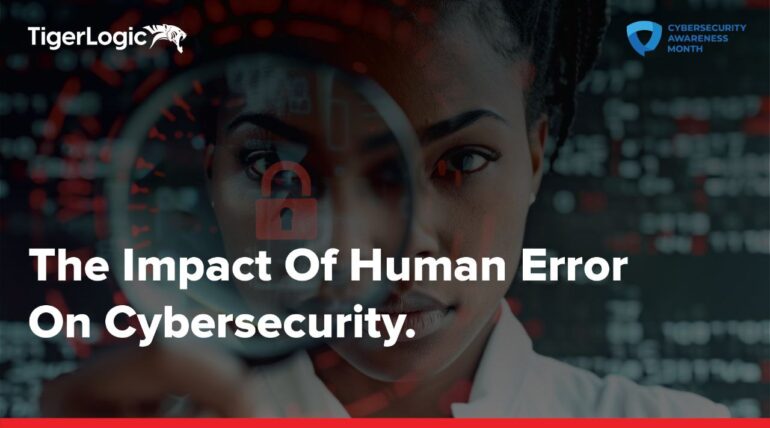
Did you know that a staggering 88% of cybersecurity breaches are caused by human error? That’s right. Studies show that human error is a major factor in data breaches, highlighting the critical need for cybersecurity awareness.
This Cybersecurity Awareness Month, we’re focusing on the human element and exploring how we can all play a part in creating a safer digital world.
The consequences of human error in cybersecurity can be devastating for businesses, impacting business finances, reputation, and even their legal standing.
Financially, a single mistake can open the door to data breaches with an average cost of $4.88 million IBM’s Cost of a Data Breach Report, 2024
Beyond the financial impact, businesses also face the risk of reputational damage when customers’ trust is violated due to a security breach. It can lead to loss of business, negative media attention, and long-term damage to the brand’s image. This loss of customer trust can be difficult and costly to rebuild.
Furthermore, businesses may face legal liabilities and regulatory penalties for failing to adequately protect sensitive data. Laws like GDPR and CCPA impose strict requirements for data security and privacy, and non-compliance can result in huge fines and legal action. In some cases, executives can even be held personally liable for negligence. Ultimately, the cost of human error in cybersecurity is far-reaching impacting a business’s financial stability, customer relationships, and long-term viability.
Types of Human Error:
Human error in cybersecurity manifests in many ways, which could look like harmless actions. Here are some common examples:
- Weak Passwords: Using easily guessable passwords (like “password123” or a pet’s name) or reusing the same password across multiple accounts makes it easier for attackers to gain unauthorized access. For example, in 2016, Dropbox suffered a massive data breach where millions of user accounts were compromised due to weak and reused passwords.
- Phishing Scams: Falling victim to phishing emails or messages that appear to be from legitimate sources but are designed to trick individuals into revealing sensitive information like login credentials or credit card details. A classic example is the 2017 Equifax data breach, where attackers exploited a vulnerability in the company’s website and then used phishing emails to steal personal information from millions of customers.
- Clicking on Malicious Links: Clicking on links in emails, messages, or websites that can download malware or redirect to fake websites designed to steal information. Most malicious links are sent via SMS messages or emails, often impersonating banks or delivery services.
- Improper Data Handling: Mishandling sensitive data, such as storing it insecurely, sharing it with unauthorized individuals, or failing to delete it properly.
These examples highlight the diverse ways human error can create vulnerabilities in cybersecurity. It’s not just about technical skills; it’s about awareness, vigilance, and adopting safe online habits.
The Psychology Behind Mistakes:
Understanding why people make these errors is crucial for developing effective prevention strategies. Here are some key psychological factors:
- Lack of Awareness: Many individuals simply aren’t aware of the risks associated with their online actions or the importance of cybersecurity best practices. They may not understand how their actions can contribute to a data breach or the potential consequences of their mistakes.
- Social Engineering Tactics: Attackers often exploit human psychology through social engineering tactics, using manipulation and deception to trick individuals into making mistakes. They may create a sense of urgency, authority, or fear to persuade people to click on links, download attachments, or reveal sensitive information.
- Habits and Assumptions: We often perform tasks on autopilot, relying on habits and routines. This can lead to errors when we’re not paying attention or when we’re distracted. For example, we may automatically click on a link in an email without carefully checking the sender or the content.
Even those aware of the risks may become complacent over time, assuming that “it won’t happen to me.” They may neglect to update passwords, install security updates, or follow security protocols, leading to vulnerabilities.
By understanding these psychological factors, we can develop training and awareness programs that address the root causes of human error and empower individuals to make safer choices online.
While firewalls, antivirus software, and encryption are vital components of a robust cybersecurity strategy, they can only go so far. Human behavior remains the critical factor in determining an organization’s vulnerability to cyber threats.
By building a culture of awareness, providing regular training, and empowering individuals to make smart security decisions, we can significantly reduce the risk of human error.
Subscribe to the TigerLogic Africa newsletter and follow us on LinkedIn, Twitter, and Instagram for more cybersecurity insights throughout Cybersecurity Awareness Month.
